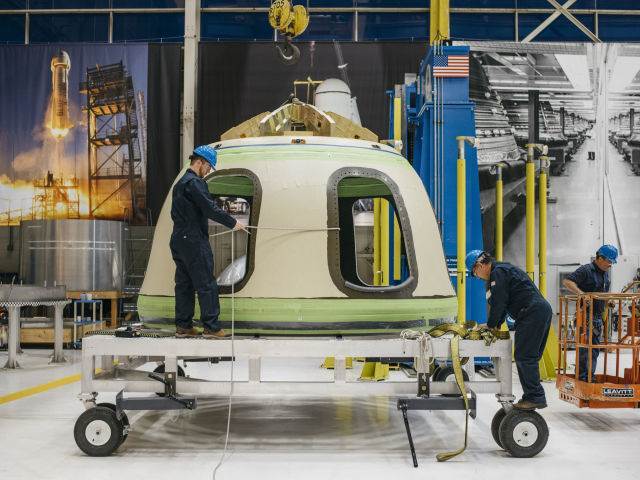
Engineers work on a New Shepard capsule in March inside Blue Origin’s rocket factory near Seattle. (credit: Blue Origin)
Today marks the third time in just over four months that Blue Origin has successfully launched and landed its New Shepard spacecraft and propulsion module. The launch and landing took place in a remote area of West Texas and is a significant step for a company that wants to dramatically cut the cost of access to space.
Before last November, when New Shepard made its historic first flight, it was unclear how difficult it would be to land a rocket vertically on the ground after sending it into space. But then Blue Origin did it. A month later SpaceX performed the same feat with its Falcon 9, a much larger and more powerful booster that had just delivered a payload into orbit.
That led to the next hurdle: could rockets be refurbished quickly and relatively inexpensively for subsequent flights? This was a stumbling block for the space shuttle, which required hundreds of millions of dollars in engine tests and retrofitting after every flight. Blue Origin has begun jumping this hurdle too. First, it flew the New Shepard module again in January, a turn-around time of about two months.
Read 7 remaining paragraphs | Comments
![]()





![[CES 2026] Quest For Perfect Color…Samsung To Push](https://loginby.com/itnews/wp-content/uploads/2025/12/CES-2026-Quest-For-Perfect-Color…Samsung-To-Push-100x75.jpg)

